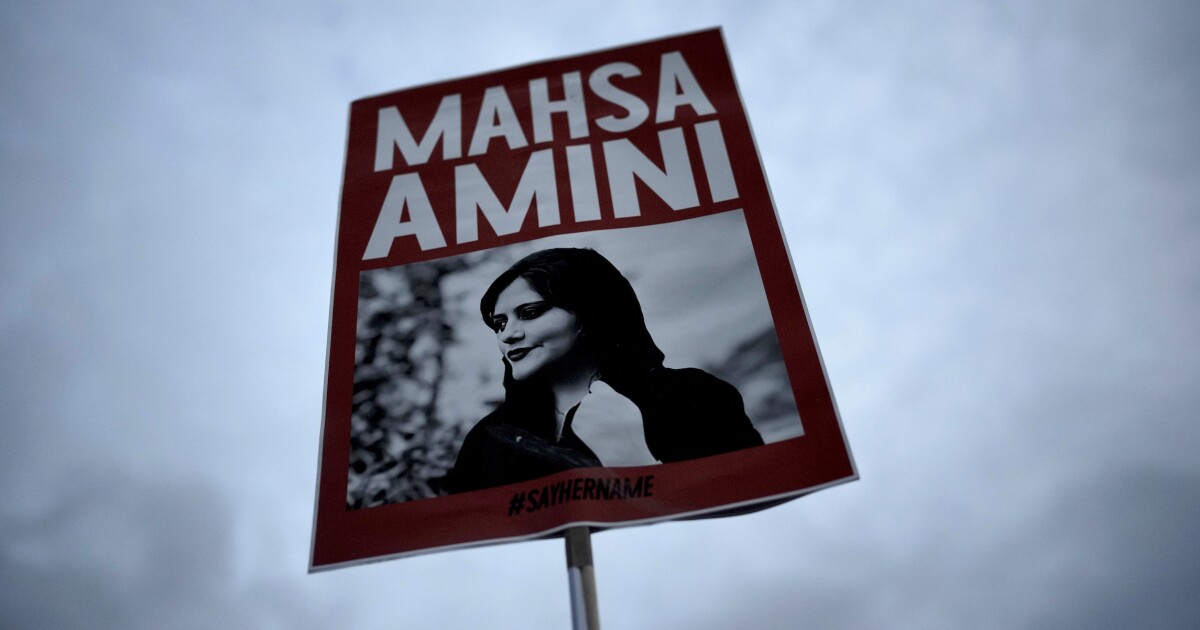

U.S. forces downed a drone that “appeared to threaten” American troops in northern Iraq during an Iranian barrage that left dozens of Iraqis killed or wounded, according to authorities.
Many of the strikes appear targeted at the Iraqi Kurdish militia forces, known as the Peshmerga, which have proven to be a crucial security partner for the United States in the years since the Islamic State first rampaged across Syria and northern Iraq. U.S. forces, which returned to Iraq on a mission to dismantle ISIS, responded on Wednesday when Iran’s Islamic Revolutionary Guard Corps seemed likely to strike at Americans as well, according to military officials.
“At approximately 2:10 PM local time, US forces brought down an Iranian Mojer-6 Unmanned Aerial Vehicle headed in the direction of Erbil as it appeared as a threat to CENTCOM forces in the area,” U.S. Central Command announced. “CENTCOM forces, in support of partnered forces in Iraq, are assessing the situation.”
The Iranian attacks have targeted the region’s Kurdish minority population, whose traditional homeland crosses several national boundaries, including those of Iran and Iraq, amid a wave of protests against the Iranian government. The strikes have drawn a rebuke from the United States and other Western powers, laying a new controversy alongside the thicket of disputes that has prevented the restoration of the 2015 Iran nuclear deal.
PENTAGON CONFIRMS RUSSIA’S USE OF IRANIAN DRONES IN UKRAINE
“Its flagrant use of missiles and drones against its neighbors, as well as its providing of drones to Russia for its war of aggression in Ukraine and to proxies throughout the Middle East region, should be universally condemned,” White House National Security Council adviser Jake Sullivan said Wednesday. “The United States will continue to pursue sanctions and other means to disrupt Iran’s destabilizing activities across the Middle East region. “
Sullivan implied that Iran is trying to “deflect blame from its internal problems and the legitimate grievances of its population with attacks across its borders.” The Iranian strikes involved the “use of ballistic missiles and drone attacks,” State Department spokesman Ned Price added. The addition of the ballistic missiles intensifies the assault and may raise the political significance of the strikes.
“This is a sign of the future: When the Islamic Republic is looking to deflect, expect its military to try to flex its muscles somewhere else,” Foundation for Defense of Democracies senior fellow Behnam Ben Taleblu told the Washington Examiner. “And what is also a sign of the future is the greater Iran’s missile power becomes, the lower the bar for their use becomes.”
Iranian forces launched a series of strikes amid an outbreak of major nationwide protests by Iranians outraged over the fate of Mahsa Amini, a 22-year-old Iranian Kurd who died earlier this month in the custody of Iran’s morality police, who detained her for a head scarf infraction.
“Mahsa is the voice of the anger of the Iranian people right now. Mahsa has sparked this anger,” Erfan Mortezehai, Amini’s cousin, said during an interview conducted “in the mountainous border region between Iran and neighboring Iraq,” as Sky News described the setting. “Because the family cannot voice their protest and cannot convey their demands to the world, they asked me to be their voice so Mahsa’s blood is not lost. They are calling for the international community to come to their aid.”
Protests also have been held in Iraqi Kurdistan. IRGC officials have taken the links between Iraqi and Iranian Kurds as a justification for the attacks by claiming that the protests are fomented by the Iraqi Kurds.
“We will not allow the formation of any threats in our surroundings,” IRGC Deputy Commander for Operations Abbas Nilforoushan said this week. “We have informed our friends in the [Kurdistan] Region that taking up position and establishing bases by the enemies of the Islamic revolution on their land is not acceptable. … The bases that we targeted recently had the greatest role in the riots of past days.”
Some of the attacks “impacted the Iranian refugee settlements in Koya,” a town on the Iraqi side of the Iraq-Iran border of the Kurdish region.
“The attack is reported to have resulted in a number of civilian casualties and injuries, including Iranian refugees — among them are women & children,” the U.N. High Commission on Refugees team wrote on Twitter. “The attack had reportedly impacted a primary school where refugee students were present. UNHCR is in close dialogue with the authorities concerning the immediate needs of the most affected.”
CLICK HERE TO READ MORE FROM THE WASHINGTON EXAMINER
Ben Taleblu, who specializes in Iranian security issues, emphasized the “political” messaging entailed by the use of ballistic missiles. “The fact that these missiles are increasingly being used in military operations that are overt and that the regime is trying to signal with them, means we’re moving towards an even more dangerous and unstable place,” he said.





